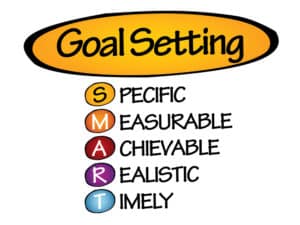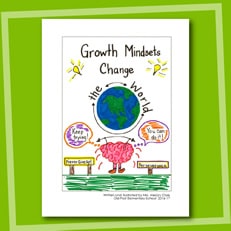 Time to start fresh, and set goals for 2019! It’s likely that your students have been thinking pretty hard about their own goals for the second half of the school year already. Or perhaps just wondering what the heck goals are and what they mean to them.
Time to start fresh, and set goals for 2019! It’s likely that your students have been thinking pretty hard about their own goals for the second half of the school year already. Or perhaps just wondering what the heck goals are and what they mean to them.
January is an excellent time to talk with your students about goals and how they can play a role in helping them reach academic and personal objectives.
Making a Class Book and Teaching Students About Goal Setting
When setting goals, try not to let your students set overly ambitious goals - they probably won’t become a YouTube sensation by May. It will only lead to frustration, and the child-believing goals aren’t something they can actually achieve. It’s important to set short-term, attainable goals so that students can understand what it takes to set goals and how exciting it is to celebrate when they achieve those goals.
Use creating a class book as a way to explain what short-term attainable mini goals are and how those mini goals are used to achieve a larger goal. For example, by week one set a goal that the class needs to have a book theme chosen, all first drafts should be completed by week two, revisions and illustrations take place in week three, etc.
What Types of Goals Should Students Focus On?
Carol Dweck, author of the 2006 book “Mindset: The New Psychology of Success,” is famous for suggesting that there are two mindsets: fixed and growth. She says that a person who understands that with hard work their intelligence can grow over time has a growth mindset. Rather, a person with a fixed mindset believes that intelligence is a set trait and can’t be improved.
In that same vein, Dweck talks about two types of goals when it comes to academic achievements.
- Performance Goals: These goals are focused on showing knowledge, such as getting an A on a test.
- Learning Goals: These goals require students to develop a complete understanding of a concept or master a skill, such as finishing the multiplication tables.
While getting an A on a test or for the class is certainly a good goal, research shows that these particular performance goals only demonstrate short-term gains, but those who take the time and effort to actually master a skill will ultimately lead to an ability to effectively apply it.
Help Students Write Down Steps to Achieve Their Goals
Many elementary teachers use the acronym “SMART” to help explain how to set goals to their students.
- Specific: What exactly do you want to do?
- Measurable: How will you know when you achieved it?
- Achievable (or some use Action Plan): Is it possible to attain this goal in a reasonable timeframe? What steps will you use to do so?
- Realistic: Is this goal worth the effort it will take to achieve it?
- Timely: What is the deadline for reaching this goal?
The process of refining their goals is similar to the writing process, and it’s a great way to remind students how important it is to spend time thinking about what they write as opposed to putting on paper whatever pops in their heads first.
Are you Enjoying this Content?
Have Students Write Down Their Goals
A goal without a plan is just a wish. — Antoine de Saint-Exupéry
Creating a writing exercise for elementary students allows them to slow down and carefully consider what they’d like to propose as their goals.
It’s important to give them some ideas of what goals might look like, such as:
- Master subtraction by March.
- Use 5 out of 10 vocabulary words in each piece of writing.
- Follow directions and listen to the teacher.
Another important facet of providing examples is showing the students how to be specific in their goal setting. Help them create a timeline, so they know exactly what they are aiming for rather than a more general goal, such as saying, “I want to get better at math.”
The act of physically writing down goals will automatically make the concept more tangible to students.
When you talk about goal setting, tell your students that the goals should require some effort. Goals should be attainable, but not so simple that they require minimal effort to achieve.
Encourage them to explain their plan to successfully attain their goals—what steps do they need to take, what timeframe will it take to complete the goal, etc.
PROJECT IDEA
Take your students’ writing exercises about goals — be sure that they add some fun illustrations to accompany them — and make them into a classbook.
By making a classbook out of their writings centered around goals, you are adding weight to the goals, and this will help make your students really consider what they can achieve by the end of school year.
In fact, consider have your students draft up goals and plans to achieve them, and then do a peer review before they perform their final edits and revisions. When making a classbook, it’s always nice to have a polished writing piece to give back to your students and their families.
This will be a boost of confidence for students when they see their goals published and ultimately achieve those goals! It will be fun for the students at the end of the school year to reflect on what they thought they would be able to complete by the end of the year.
For more creative ideas to boost your students’ writing, visit our online teacher’s lounge and sign up for a free classbook publishing kit.







